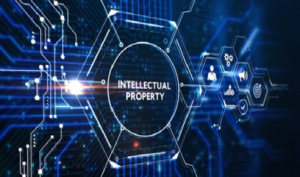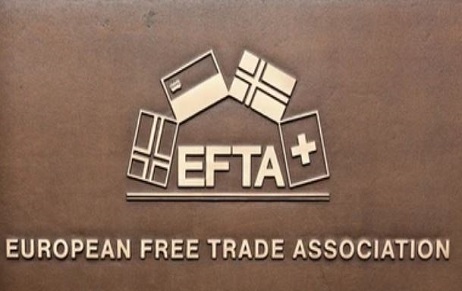This article delves into the ongoing debate around the issue of right of ownership of…
Analyzing relationship between Contemporary art and Intellectual Property Rights
Introduction
Over $67 billion USD was transacted in the worldwide contemporary art market in 2018, an increase of nearly $3 billion USD from the previous year’s value. The number of artworks bought and sold throughout the world increased to almost 40 million in 2018 from around 39 million the year before, providing further evidence of this trend. Paintings, sculptures, and other forms of modern art allow individuals to freely express themselves in a way that is approachable to others due to the growing value of the market and the creation of new opportunities, as well as the degree of creative freedom that the sector provides. There are more and more people in this generation actively engaged in modern art, and this poses a challenge in terms of policing it, as each individual’s ideas and methods will naturally be unique.
[Image Sources: Shutterstock]

Contemporary Art
Inspiration may come from everywhere; artists draw on their surroundings and the works of other artists to shape their own unique style. And that’s the rub; this is the crux of the problem. This is the root of the problem. Particularly in contemporary art, there is a focus on reevaluating and improving existing works in order to portray them in a new light. Artwork based on such a notion presents challenges when attempting to establish ownership. Can I be held responsible for infringement if, as a modern artist, I look to the works of others for inspiration and then produce new works that include those ideas with my own spin on them? Should I be branded a plagiarist if I create something that looks like the work of someone else?
It could be argued that the creator of a work of art deserves complete ownership over it, and I wouldn’t disagree with that, but doesn’t every work owe at least some existence to another body of knowledge?
Test of Sustainability
The uniqueness of a piece of art is evaluated by its potential to endure as a form of expression across time. The test is used to establish the extent to which one artist has copied, reinterpreted, and re-created the work of another artist. When a recreation of a work goes beyond a certain acceptable threshold, ownership of the work reverts to the original creator.
The more realistic viewpoint, however, is certain that there is no one-size-fits-all criteria for establishing artistic uniqueness. In such a scenario, it’s more useful to focus on differences than similarities. Each kind of art must be evaluated on its own merits, with special attention paid to whether or not it introduces a fresh point of view or creates a new kind of essence. Only works that stand out from the crowd as being really original will be awarded a positive rating. This will vary from artist to artist and work to work, but the important thing is to evaluate each item objectively. We can’t be forced to arrive at the right answer by following a set of rules.
Challenges faced by IP
Lack of insight
Small firms serving the public by virtue of the growing number of individuals trying out their talents have a low chance of success due to a lack of experience and resources. As a result, small businesses run into issues they didn’t anticipate since their owners lacked a solid understanding of intellectual property rules. Having a thorough understanding of these topics is crucial for avoiding problems.
The IP legislation and the function of modern art are at odds with one another.
Intellectual property (IP) is the attempt to prevent future attempts to copy or replicate a protected work. Modern art requires reworking, providing a new viewpoint on an existing artwork. It’s not uncommon for artists to have questions about the current arts and works they’re influenced by because of the constant threat of a black slash.
Developing more advanced technological means
IP crimes are becoming widespread in today’s digital age. It’s surprisingly easy to steal someone else’s creative idea without their knowledge, and that may cost them a lot of money. Effective intellectual property regulations are more important than ever. Modern artists who utilize historical techniques to create new works should be respectful of the rights of their predecessors.
Do works of modern art demonstrate the necessity for changes to the current IP system?
In light of the difficulties we’ve outlined, there are several gaps that must be filled in order to familiarize modern artists with IP culture and encourage the use of the many forms of protection that IP rights give. In order for modern art to be under the purview of intellectual property rules, there must be an equitable division of rights and a transition from the original work to a reproduction that offers a new viewpoint. It’s crucial to spread awareness about the value of intellectual property (IP) and encourage people to value IP content. We are aware that intellectual property (IP) is inherently global, and that IP theft can occur everywhere, including in countries where the victim does not speak the language. As a result, we need laws and tactics that take a more comprehensive approach, reassuring modern creators of the value of intellectual property (IP) for the sake of their works’ safety while simultaneously addressing the many issues that plague them.
Conclusion
Problems requiring IP-based solutions are encountered by people at all hours of the day and night. The exclusion of modern and contemporary art from IP is a problem that must be fixed, and this can only be done through a nuanced appreciation for the various art forms and a commitment to making decisions based on the interests of the artists involved rather than a rigid set of rules or a predetermined formula. Achieving all of this is no small feat, but it is possible with the right policy and frameworks in place and made available to today’s artists. This will ensure that their creative output, their use of imagination, and their desire for widespread acclaim are all safeguarded by the IP laws that are in place.
Author: Kaustubh Kumar, in case of any queries please contact/write back to us via email to [email protected] or at IIPRD.
References
https://www.intepat.com/blog/intellectual-property-law-contemporary-
intepat.com/blog/intellectual-property-law-contemporary-art/



